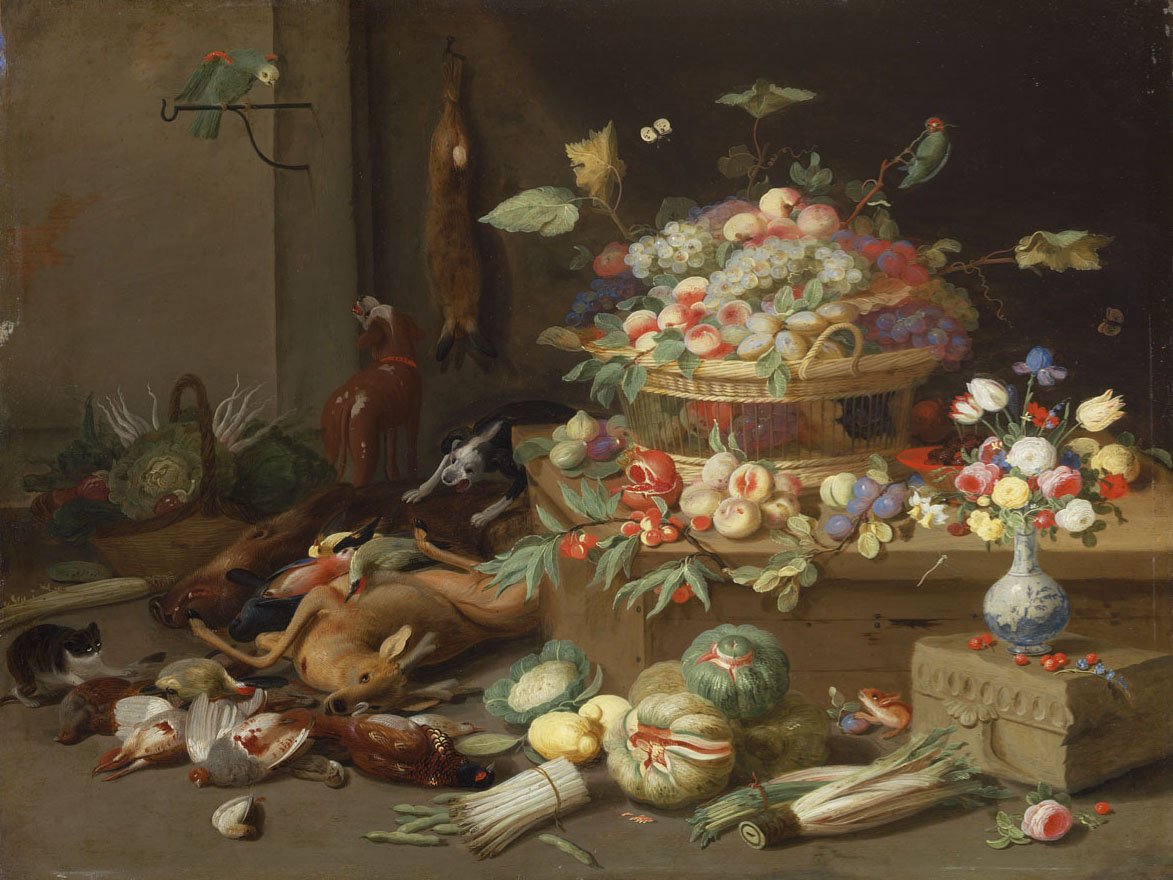
Kitchen Still Life with Dead Stag
Old Master Paintings
| Artist | |
|---|---|
| Culture | Italian |
| Date | ca. 1475-1480 |
| Object type | painting |
| Medium, technique | tempera and gold on poplar |
| Dimensions | 44.8 × 42.9 × 3.5 cm painted surface: 43.6 × 42.9 cm framed: 68 × 65 × 10 cm |
| Inventory number | 2537 |
| Collection | Old Master Paintings |
| On view | Museum of Fine Arts, First Floor, European Art 1250-1600, Gallery XIII |
According to the Old Testament story, Esther, wife of King Ahasuerus of Persia, kept her Jewish origins secret, as requested by her adoptive father. However, when Haman, the viceroy, tried to persuade the king to have all the Jews executed because of a personal insult, Esther risked her own life by approaching Ahasuerus unsummoned, in order to intervene and save her people. “All the king’s officials and the people of the royal provinces know that for any man or woman who approaches the king in the inner court without being summoned the king has but one law: that they be put to death unless the king extends the gold scepter to them and spares their lives (Esther 4:11). Ahasuerus forgave Esther for the uninvited visit, and she was thus able to persuade the Persian king to withdraw his decree for the extermination of the Jews. Botticelli’s follower places the characters in an architectural environment created with playful imagination. On one side, the gestures of surprise; on the other, those of suspended excitement convey the tension of the moment.
This painting is a fragment of a wider composition, which once adorned the front of a wedding chest. Such items were always produced in pairs, and often depicted stories that underscored marital virtues. Brave and loyal Esther is portrayed here as the model of a good wife, as opposed to the king’s disobedient first wife, Queen Vashti, whose banishment could be seen on the other chest.
By the eighteenth century, the front panels of both wedding chests had been cut up, one into two pieces, the other into three. The fragments thus became independent paintings, three of which are now in the Uffizi Gallery in Florence, with another in the Louvre in Paris.
Pigler, Andor, Katalog der Galerie Alter Meister, 1-2. Museum der Bildenden Künste, Szépművészeti Múzeum, Budapest. 2, Akadémiai Kiadó, Budapest, 1967, p. 637.
Boskovits, Miklós, Toszkán kora reneszánsz táblaképek: Szépművészeti Múzeum, Budapest – Keresztény Múzeum, Esztergom, Corvina, Budapest, 1968, no. 44.
Sallay, Dóra, “Jacopo del Sellaio: Jelenetek Vasti és Eszter királyné történetéből/Jacopo del Sellaio’s Stories of Vashti and Esther”, Bulletin du Musée Hongrois des Beaux-Arts/Szépművészeti Múzeum Közleményei 124 (2019), p. 67-94.
This record is subject to revision due to ongoing research.